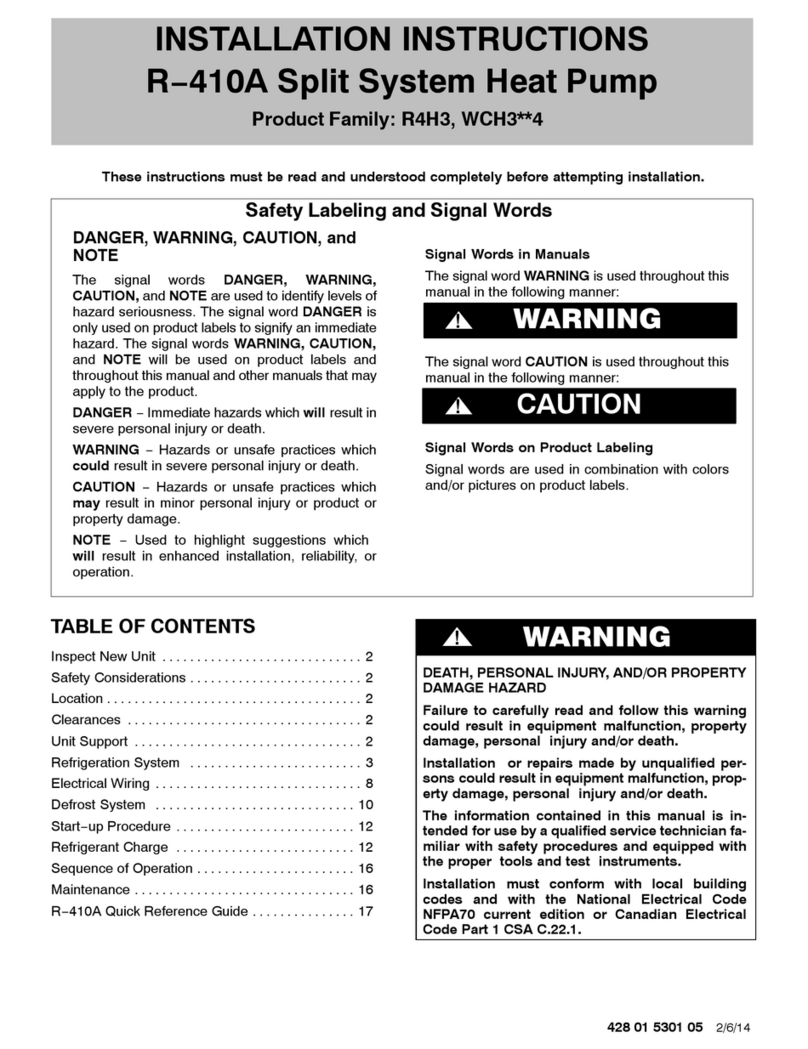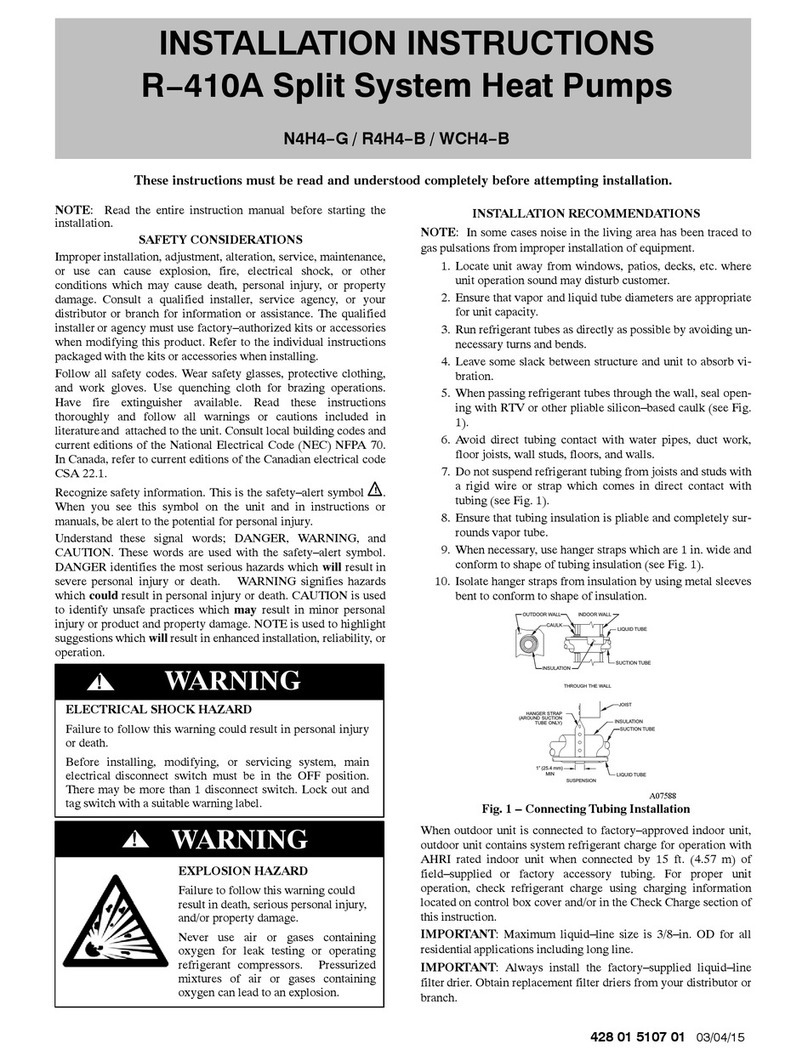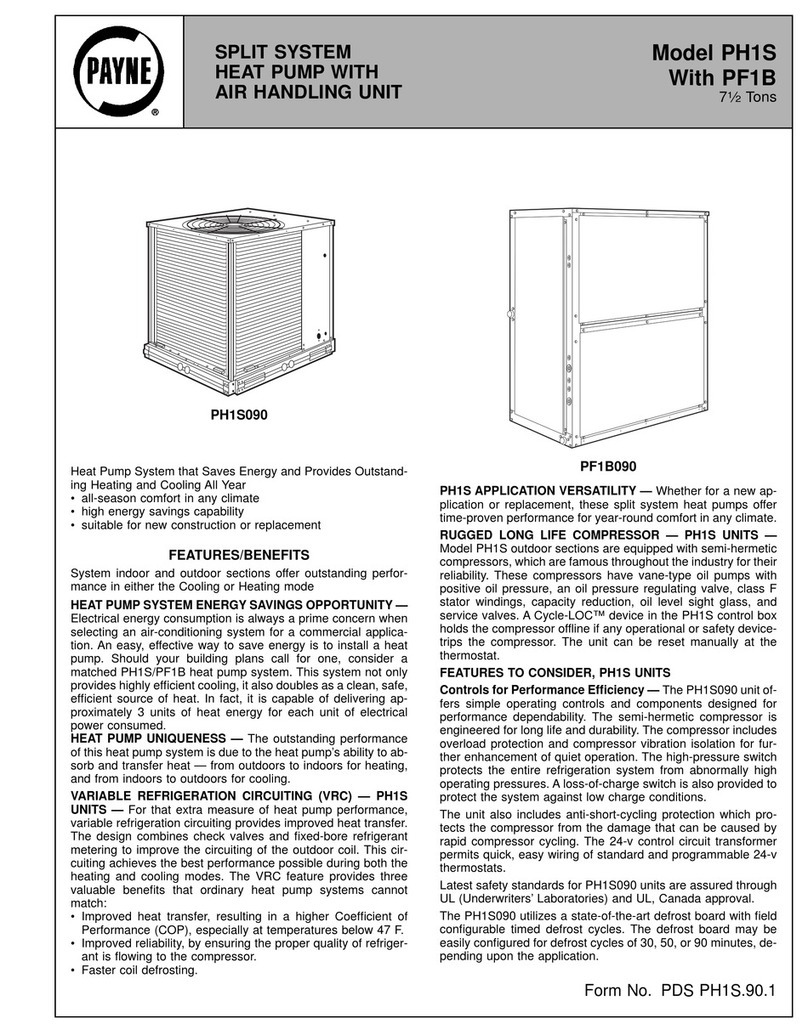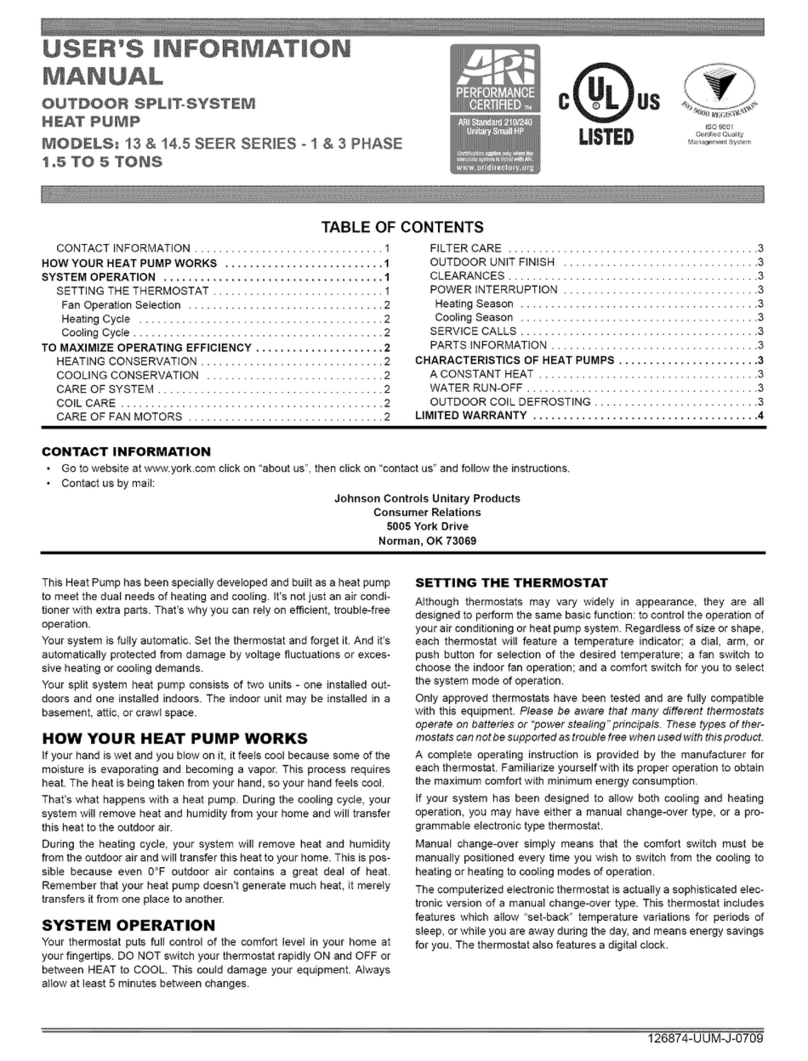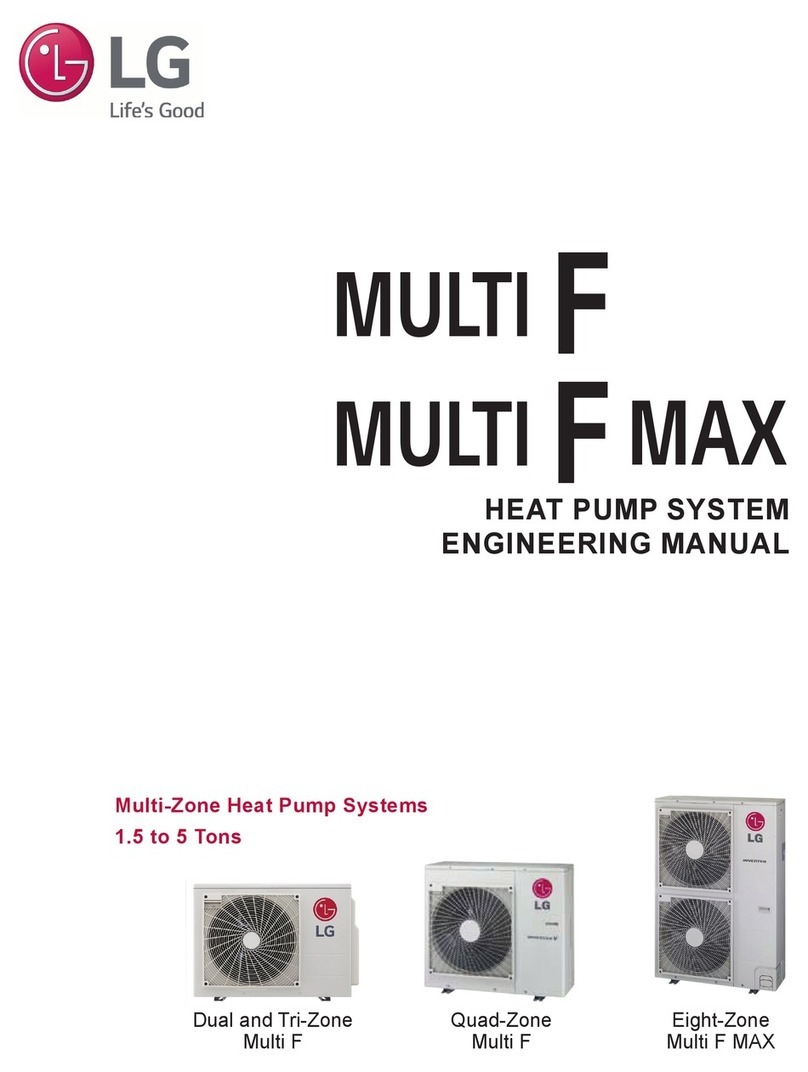Grandaire 4860 Assembly instructions

1
ALL phases of this installation must comply with NATIONAL, STATE AND LOCAL CODES
IMPORTANT — This Document is customer property and is to remain with this unit. Please return to service information
pack upon completion of work.
These instructions do not cover all variations in systems or provide for every possible contingency to be met in connection with the in-
stallation. Should further information be desired or should particular problems arise which are not covered sufficiently for the purchaser’s
purposes, the matter should be referred to your installing dealer or local distributor.
Note : The manufacturer recommends installing only approved matched indoor and outdoor systems. All of the manufac-
turer’s split systems are A.H.R.I. rated only with TXV indoor systems. Some of the benefits of installing approved matched
indoor and outdoor split systems are maximum efficiency, optimum performance and the best overall system reliability.
Condensing Units
Installer’s Guide
Split System Heat Pump
Up to 18 SEER
2-3-4-5 Ton Capacity
R410A
Table of Contents
Section 1. Safety............................................................................2
Section 2. Unit Location Considerations.....................................3
Section 3. Unit Preparation...........................................................5
Section 4. Setting the Unit............................................................5
Section 5. Refrigerant Line Considerations................................6
Section 6. Refrigerant Line Routing.............................................7
Section 7. Refrigerant Line Brazing.............................................8
Section 8. Refrigerant Line Leak Check....................................10
Section 9. Evacuation..................................................................11
Section 10. Service Valves..........................................................11
Section 11. Electrical - Low Voltage...........................................12
Section 12. Electrical - High Voltage..........................................13
Section 13. Start Up.....................................................................14
Section 14. System Charge Adjustment....................................15
Section 15. System operation and Troubleshooting.................19
NOTE: Appearance of unit may vary.

2
Section 1. Safety
Important - This document contains a wiring diagram
and service information. This is customer property and is
to remain with this unit. Please return to service informa-
tion pack upon completion of work.
Failure to follow this warning could result in property
damage, severe personal injury, or death.
Disconnect all electric power, Including remote disconnects
before servicing. Follow proper lockout/tagout procedures
to ensure the power cannot be inadvertently energized.
HAZARDOUS VOLTAGE!
Any attempt to repair a central air conditioning product
may result in property damage, severe personal injury,
or death.
These units use R-410A refrigerant which operates at
50 to 70% higher pressures than R-22. Use only
R-410A approved service equipment. Refrigerant
cylinders are painted a “Rose” color to indicate the type
of refrigerant and may contain a “dip” tube to allow for
charging of liquid refrigerant into the system. All R-410A
systems with variable speed compressors use a PVE
oil that readily absorbs moisture from the atmosphere
To limit this ‘hygroscopic“ action, the system should
remain sealed whenever possible. If a system has been
open to the atmosphere for more than 4 hours, the
compressor oil must be replaced. Never break a
vacuum with air and always change the driers when
opening the system for component replacement.
May cause minor to severe burning. Failure to follow this
Caution could result in property damage or personal injury.
Do not touch top of compressor.
REFRIGERANT OIL!
HOT SURFACE!
Failure to follow proper procedures can result in
personal illness or injury or severe equipment
damage.
System contains oil and refrigerant under high
pressure. Recover refrigerant to relieve pressure
before opening system.
CONTAINS REFRIGERANT!
Failure to inspect or use proper service tools may
result in equipment damage or personal injury.
Reconnect all grounding devices. All parts of this
product that are capable of conducting electrical
current are grounded. if grounding wires, screws,
straps, clips, nuts, or washers used to complete a
path to ground are removed for service, they must be
returned to their original position and properly
fastened.
GROUNDING REQUIRED!
Failure to follow this warning will result in abrupt
release of system charge and may result in personal
injury and/or property damage. Extreme caution
should be exercised when opening the Liquid Line
Service valve. Turn valve stem counterclockwise only
until the stem contacts the rolled edge. No torque is
required.
SERVICE VALVES!
Failure to inspect lines or use proper service tools
may result in equipment damage or personal injury.
If using existing refrigerant lines make certain that all
joints are brazed, not soldered.
BRAZING REQUIRED!
Failure to follow this warning could result in property
damage, severe personal injury, or death.
Earth connection essential before connecting
electrical supply.
HIGH LEAKAGE CURRENT!
WARNING
CAUTION
CAUTION
WARNING
WARNING
WARNING
CAUTION
This information is intended for use by individuals
possessing adequate backgrounds of electrical and
mechanical experience. Any attempt to repair a central air
conditioning product may result in personal injury and/or
property damage. The manufacturer or seller cannot be
responsible for the interpretation of this information, nor
can it assume any liability in connection with its use.
CAUTION
WARNING

3
When mounting the outdoor unit on a roof, be
sure the roof will support the unit’s weight.
Properly selected isolation is recommended to
prevent sound or vibration transmission to the
building structure.
• Maximum line length = 100 feet.
• Maximum vertical length = 50 feet.
• Compressor crankcase heat is required for line
lengths over 50 feet.
• Use only the line diameters indicated in Table
5.1.
Section 2. Unit Location Considerations
2.1 Unit Dimensions
2.2 Refrigerant Piping Limits
Unit Dimensions
Models H x W x L(Inches)
2436
4860
24-15/16 x 29-1/8 x 29-1/8
33-3/16 x 29-1/8 x 29-1/8
Standard Line
Set 100 ’ Max
Line Length
50’ Max
Line Lift
50’
Max
Line Lif t
L
H
W
See Product Specifications for unit's weight.

4
Min. 20” to
Shrubber y
Av oid Install
Near Bedroom s
Min. 60” Unrestricted
Access Panel
Min. 24”
Unrestricted
2.4 Location Restrictions
Ensure the top discharge area is unrestricted for
at least 60 inches above the unit.
Do not locate outdoor unit near bedrooms since normal
operational sounds may be objectionable.
Min. 20” to
Shrubber y
Position unit to allow adequate space for unobstructed
airflow, wiring, refrigerant lines, and serviceability.
Allow a minimum of 12 in. clearance on one side of access
panel to a wall and a minimum of 24 in. on the adjacent
side of access panel.
Maintain a distance of 24 in. between units.
Position unit so water, snow, or ice from roof or overhang
cannot fall directly on unit.
Note: It is recommended that these precautions be
taken for units being installed in areas where snow
accumulation and prolonged below-freezing
temperatures occur.
• Units should be elevated 3-12 inches above the pad
or rooftop, depending on local weather. This addi-
tional height will allow drainage of snow and ice
melted durIng defrost cycle prior to its refreezlng.
Ensure that drain holes in unit base pan are not
obstructed, preventing drainage of defrost water.
• If possible, avoid locations that are likely to accu-
mulate snow drifts. if not possible, a snow drift barrier
should be installed around the unit to prevent a
build-up of snow on the sides of the unit.
Min 12"
Snow
barrier
3- 12" Elevation
Snow legs
pad
Cold Climate Considerations (Heat Pump Only)
Min. 12” to
wall.
Access Panel

5
Section 3. Unit Preparation
3.1 Prepare The Unit For Installation
STEP 1 - Check for damage and report promptly to
the carrier any damage found to the unit.
The charge port can be used to check to be sure
the refrigerant charge has been retained during
shipment.
Section 4. Setting the Unit
4.1 Pad Installation
When installing the unit on a support pad, such as a
concrete slab, consider the following:
• The pad should be at least 1-2” larger than the unit
on all sides.
• The pad must be separate from any structure.
• The pad must be level.
• The pad should be high enough above grade to
allow for drainage.
• The pad location must comply with National, State,
and Local codes.
IMPORTANT NOTE:
These instructions are intended to provide a method to tie-down system to cement slab as a securing procedure
for high wind areas. It is recommended to check Local Codes for tie-down methods and protocols.
SEE DETAIL A
#7 X 3/8” Self Tapping Screws
(Don’t Exceed 3/8” long)
1/4” Χ 1-1/2” Hex Washer Head Concrete Screws
(3/16” Pilot Hole Needed. Pilot Hole Should Be1/4” Deeper
Than The Fastener Embedment)
DETAIL A
Brackets:
2” width, 1/16” thickness,
height as required.
Available from distributor
or in market place.
The dimension see
Unit Dimensions.

6
Determine required line length.
Section 5. Refrigerant Line Considerations
5.1 Refrigerant Line and Service Valve Connection Sizes
5.2 Required Refrigerant Line Length
Line Sizes Service Valve Connection Sizes
Model Suction
Line
Liquid
Line
Suction Line
Connection
Liquid Line
Connection
2436
4860
3/4 3/8 3/4 3/8
7/8 3/8 7/8 3/8
Table 5.1
Line Lengt h
5.3 Refrigerant Line Insulation
Important: The Suction Line must always be
insulated. DO NOT allow the Liquid Line and
Suction Line to come in direct (metal to metal)
contact.
Suction Line
Liquid Line
Insulation

7
5.4 Reuse Existing Refrigerant Lines
For retrofit applications, where the existing refrigerant
lines will be used, the following precautions should
be taken:
• Ensure that the refrigerant lines are the correct
size. Refer to Section 2.2 listed and Table 5.1.
• Ensure that the refrigerant lines are free of leaks,
acid, and oil.
CAUTION
!
If using existing refrigerant lines make certain that
all joints are brazed, not soldered.
Section 6. Refrigerant Line Routing
6.1 Precautions
Important: Take precautions to prevent noise within
the building structure due to vibration transmission
from the refrigerant lines.
For Example:
• When the refrigerant lines have to be fastened to floor joists or other framing in a structure, use isolation type
hangers.
• Isolation hangers should also be used when refrigerant lines are run in stud spaces or enclosed ceilings.
• Where the refrigerant lines run through a wall or sill, they should be insulated and isolated.
• Isolate the lines from all ductwork.
• Minimize the number of 90º turns.
Comply with National, State, and Local Codes when
isolating line sets from joists, rafters, walls, or other
structural elements.
Isolation From Joist/Rafter
Side View
8 Feet Maximum
Joist/Rafter
Isolator
Line Set
8 Feet Maximum
Note: The manufacturer recommends installing only
approved matched indoor and outdoor systems. All
of the manufacturer’s split systems are A.H.R.I. rated
only with TXV indoor systems. Some of the benefits
of installing approved matched indoor and outdoor
split systems are maximum efficiency, optimum per -
formance and the best overall system reliability.
Secure Suction line from joists using isolators every 8 ft. Secure
Liquid Line directly to Suction line using tape, wire, or other
appropriate method every 8 ft.

8
Isolation In Wall Spaces
Side View
Wall
Isolator
Line Set
8 Feet Maximum
Secure Suction Line using isolators every 8 ft. Secure Liquid Line
directly to Suction Line using tape, wire, or other appropriate
method every 8 ft.
8 Feet Maximum
Isolation Through Wall DO NOT hang line sets from ductwork
Sealant
Insulation
Suction Line
Wall
Ductwork
Isolator
Line Set
Section 7. Refrigerant Line Brazing
7.1 Braze The Refrigerant Lines
STEP 1 - Remove caps or plugs. Use a deburing
tool to debur the pipe ends. Clean both internal and
external surfaces of the tubing using an emery cloth.

9
STEP 2 - Remove the pressure port cap
from both service valves.
STEP 3 - Purge the refrigerant lines and indoor coil
with dry nitrogen.
STEP 4 - Wrap a wet rag around the valve body to
avoid heat damage and continue the dry nitrogen
purge.
Braze the refrigerant lines to the service valves.
Check liquid line filter drier’s directional flow arrow to
confirm correct direction of refrigeration flow (away
from outdoor unit and toward evaporator coil) as il -
lustrated. Braze the filter drier to the Liquid Line.
Continue the dry nitrogen purge. Do not remove the
wet rag until all brazing is completed.
Important: Remove the wet rag before stopping the
dry nitrogen purge.
Note: Install drier in Liquid Line.
This pipe must have a thimble

10
STEP 5 - Replace the pressure tap
caps after the service valves have cooled.
STEP 2 - Check for leaks by using a soapy solution
or bubbles at each brazed location.
Section 8. Refrigerant Line Leak Check
8.1 Check For Leaks
STEP 1 - Pressurize the refrigerant lines and evapo -
rator coil to 150 PSIG using dry nitrogen.
150 PSI
G

11
Section 9. Evacuation
9.1 Evacuate the Refrigerant Lines and Indoor Coil
Important: Do not open the service valves until
the refrigerant lines and indoor coil leak check and
evacuation are complete.
STEP 1 - Evacuate until the micron gauge reads no
higher than 350 microns, then close the valve to
the vacuum pump.
STEP 2 - Observe the micron gauge. Evacuation is
complete if the micron gauge does not rise above
500 microns in one (1) minute.
Once evacuation is complete blank off the vacuum
pump and micron gauge, and close the valves on the
manifold gauge set.
1 MIN.
Section 10. Service Valves
10.1 Open the Service Valves
Important: Leak check and evacuation must be com -
pleted before opening the service valves.
Important: The Suction Service Valve must be opened
first BEFORE opening the Liquid Service Valve!
STEP 1 - Remove service valve cap.
STEP 2 - Fully insert hex wrench into the stem
and back out counterclockwise until valve stem just
touches the rolled edge (approximately five (5) turns.)
STEP 3 - Replace the valve stem cap to prevent
leaks. Tighten finger tight plus an additional 1/6 turn.
STEP 4 - Repeat STEPS 1 - 3 for Liquid Service
Valve.
Cap
Rolled Edge to
Captivate Stem
Hex Headed
Valve System
Service Port
3/16” Hex Wrench
for Liquid Service Valve
5/16” Hex Wrench
for Suction Service Valve
Unit Side
of Service
Valve
Extreme caution should be exercised when opening
the Liquid Line Service Valve. Turn counterclock -
wise until the valve stem just touches the rolled
edge. No torque is required. Failure to follow this
warning will result in abrupt release of system
charge and may result in personal injury and /or
property damage.
0350
Micr ons
ON OFF
WARNING
!
REQUIRED PARTS LIST

12
Section 11. Electrical - Low Voltage
11.1 Low Voltage Maximum Wire Length
Table 11.1 defines the maximum total length of low
voltage wiring from the outdoor unit, to the indoor
unit, and to the thermostat.
Table 11.1
24 VOLTS
WIRE SIZE MAX. WIRE LENGTH
18 AWG 150 Ft.
16 AWG 225 Ft.
14 AWG 300 Ft.
11.2 Low Voltage Hook-up Diagrams
Air Handler Hook-up Diagram
Low V oltage connection
must be made inside th e
outdoor unit case .
Field provided bushing or strain relief is required at
the low voltage wire entry point.
Access
Panel
Notes:
1. Be sure power supply agrees with equipment nameplate.
2. Power wiring and grounding of equipment must comply with local codes.
3.
4.
Low voltage wiring to be No. 18 AWG minimum conductor.
“-----”Control for auxiliary heat during defrost.
THERMOSTAT
C
INDOOR UNIT OUTDOOR UNIT
Y
R
G Y
BLACK
G
C
C B
R
B
Control Wiring for H/P Systems.
W2
D
w1

13
Section 12. Electrical - High Voltage
12.1 High Voltage Power Supply
The high voltage power supply must agree with the
equipment nameplate.
Power wiring must comply with national, state, and
local codes.
Follow instructions on unit wiring diagram located on
the inside of the control box cover and in the Service
Facts document included with the unit.
12.2 High Voltage Disconnect Switch
12.3 High Voltage Ground
Ground the outdoor unit per national, state, and local
code requirements.
Install a separate disconnect switch at the outdoor
unit.
Field provided flexible electrical conduit must be
used for high voltage wiring.
LIVE ELECTRICAL COMPONENTS!
During installation, testing, servicing, and trouble -
shooting of this product, it may be necessary to
work with live electrical components. Failure to fol -
low all electrical safety precautions when exposed
to live electrical components could result in death
or serious injury.
WARNING
!

14
Section 13. Start Up
13.1 System Start Up
STEP 2 - Set System Thermostat to OFF.
STEP 3 - Turn on disconnect to apply power to the
indoor and outdoor units.
STEP 5 - Set system thermostat to ON.
OF F
D
O
N
E
CANCEL
ON
OFF
STEP 4 - Wait one (1) hour before starting the unit
if compressor crankcase heater is used and the
outdoor ambient temperature is below 70 ºF.
60 MIN.
STEP 1 - Ensure Sections 7, 8, 9, 10, 11, 12, and 13
have been completed.
D
O
N
E
CAN CE L
TU E
PM
SY STEM
EM H E AT
O
F
F
CO
O
L
CHAN G E FILTER UV LA MP HUMIDIFIER PA D
Foll owing
Sch edu l e
Insi de Set To

15
Section 14. System Charge Adjustment
14.1 charging: weigh-In Method
weigh-In Method can be used for the Initial installation, or anytime a system charge is being replaced. weigh-In Method
can also be used when power is not available to the equipment site or operating conditions (indoor/Outdoor tempera-
tures) are not In range to verify with the subcooling charging method.
Note: The only mode approved for validating system charge is while in Cooling "Charge Mode". Outdoor Temperature
must be between 55OF and 120OF with Indoor Temperature kept between 70OF and 80OF.
A C
Model
charge
multiplier for
interconnecting
refrigerant tube
length
0.6 oz/f t
Factory
(The data on
nameplate)
Charge
B
Table 19. New Installations — Calculating additional charge for lineset greater than 15 ft.
1. Total Line Length (ft) = _________(a)
2. Standard Lineset (ft) = 15 (b)
3. (a) minus (b) = _________(c)
4. Refrigerant Multiplier = 0.6 oz/ft (d)
5. Refrigerant Adder (c*d) = _________(e)*
.
* If lineset is less than 15 ft, (e) = 0
Table 20. Sealed-System Repairs — Calculating total system charge.
1. Total Line Length (ft) = _________(a)
2. Standard Lineset (ft) = 15 (b)
3. (a) minus (b) = _________(c)
4. Refrigerant Multiplier = 0.6 oz/ft (d)
5. Refrigerant Adder (c*d) = _________(e)*
6. Factory Charge (namplate) = _________(f)
7. Total System Charge (e+f) = _________
.
* If lineset is less than 15 ft, (e) = 0
All models
Note: The factory charge in the outdoor unit is sufficient for 15 feet of standard
size interconnecting liquid line.

16
14.2 Subcooling charging and refrigerant adjustment in cooling (above 55 F outdoor temp.)
STEP 1 - Check the outdoor ambient temperatures.
STEP 2 - Ensure Sections 7, 8, 9, 10, and 13 have
been completed.
STEP 3 - Initiate charge mode and stabilize system.
After starting the system in cooling mode, short press
“FORCE”button, and “┣” symbol appears in 10 minutes,
operate the system for a minimum of twenty (20) minutes.
20 MIN.
55 ºF
80 ºF
70 ºF
Outdoor Temp1
Indoor Temp
120 ºF
55 ºF
Outdoor Temp2
Important: After twenty (20) minute stabilization
period, maintain continuous operation while adjust-
ing refrigerant charge or TXV, after which operate
system for a minimum of five (5) minutes for system
to stabilize, otherwise repeat step 3.
Subcooling (in cooling charge mode) is the only recom-
mended method of charging above 55ºF outdoor ambi-
ent temperatures.
For best results the indoor temperature should be kept
between 70ºF to 80ºF.
For outdoor ambient temperatures below 55ºF , use
weigh-in charge method.
Note:It is important to return in the spring or summer to
accurately charge the system in the cooling mode when
outdoor ambient temperature is above 55ºF.
Outdoor
Temperature
Above 55ºF
Outdoor
Temperature
Below 55ºF

17
STEP 4 - Calculate superheat value on suction valves(According to form )
Measured Suction Line Pressure = _______ PSIG
STEP 5 - Calculate subcooling value on liquid valves(According to form )
Measured Suction Line Temp. = ________ºF
Calculate superheat value = ________ºF
Measured liquid Line Pressure = _______ PSIG
Measured liquid Line Temp = ________ºF
Calculate subcooling value = ________ºF
8 10 12 14 16 18 20 2
2
40 101 97 93 89 86 82 78 7
5
42 105 101 97 93 89 86 82 7
8
44 110 105 101 97 93 89 86 8
2
46 114 110 105 101 97 93 89 8
6
48 118 114 110 105 101 97 93 8
9
50 123 118 114 110 105 101 97 9
3
52 128 123 118 114 110 105 101 9
7
54 133 128 123 118 114 110 105 10
1
56 138 133 128 123 118 114 110 10
5
58 143 138 133 128 123 118 114 11
0
60 148 143 138 133 128 123 118 11
4
62 153 148 143 138 133 128 123 11
8
64 159 153 148 143 138 133 128 12
3
66 164 159 153 148 143 138 133 12
8
68 170 164 159 153 148 143 138 13
3
70 176 170 164 159 153 148 143 13
8
72 182 176 170 164 159 153 148 14
3
R-410A REFRIGERAN CHART
FINAL SUPERHEAT(℉)
SUCTION GAGE PRESSURE (PSI
G)
Suction Line
TEMP
(℉)
6 7 8 9 10 11 12 1
3
55 173 176 179 182 185 188 191 19
5
60 188 191 195 198 201 204 208 21
1
65 204 208 211 215 218 221 225 22
9
70 221 225 229 232 236 239 243 24
7
75 239 243 247 251 255 259 262 26
6
80 259 262 266 270 275 279 283 28
7
85 279 283 287 291 295 300 304 30
9
90 300 304 309 313 318 322 327 33
1
95 322 327 331 336 341 346 351 35
5
100 346 351 355 360 365 370 376 38
1
105 370 376 381 386 391 397 402 40
7
110 397 402 407 413 418 424 430 43
5
115 424 430 435 441 447 453 459 46
5
120 453 459 465 471 477 483 489 49
6
125 483 489 496 502 508 515 521 52
8
R-410A REFRIGERAN CHART
FINALSUBCOOLING(℉)
LIQUID GAGE PRESSURE (PSIG)
Liquid Line
TEMP
(℉
)
Insulation
107℉
107℉
Insulation
Note: If calculated subcooling value is lower than the design
subcooling value, please add refrigerant. Repeat the steps above.
Note:Make sure the superheat value of suction valve
should be above 12ºF, if the value is lower than this,
indoor TXV should be adjusted.If the temperature is
higher than 18ºF, we suggest to adjust indoor TXV.
Repeat the steps above.
Model
Design subcooling
24/36 48/60
10ºF (± 2ºF) 8ºF (± 2ºF)

18
STEP 6 - Adjust refrigerant level to attain proper
gage pressure.
Add refrigerant if the design subcooling is lower
than the chart value.
Recover refrigerant if the subcooling is higher
than the chart value.
Note: When subcooling is within specifications,
the system is properly charged.
Connect gages to refrigerant bottle and unit
as illustrated.
Purge all hoses.
Open bottle.
Stop adding refrigerant when subcooling.
matches the charging chart Final Subcooling
value.
1.
2.
3.
4.
STEP 7 - Stabilize the system.
Wait 5 minutes for the system condition to
stabilize between adjustments.
1.
2. Remove gages.
3. Replace service port caps to prevent leaks.
Tighten finger tight plus an additional 1/6 turn.
STEP 8 - Record System Information for reference.
Record system pressures and temperatures
after charging is complete.
Outdoor model number =
Measured Outdoor Ambient =
Measured Indoor Ambient =
Measured Liquid Line Temp =
℉
℉
Liquid Gage Pressure =
Suction Gage Pressure =
PSIG
PSIG
℉
Measured Suction Line Temp = ℉
20 MIN.

19
Section 15 System operation and Troubleshooting
2. Sensors (Thermistors/Pressure Transducer)
1. Control Logic Description
● The variable speed system adopts the same 24VAC control as any conventional Heat Pump.
● The compressor’s speed is controlled based on coil pressures monitored by pressure transducer. To insure
stable and adequate capacity, the compressor speed will modulate relative to evaporator pressure during
cooling operation and relative to condensing pressure during heating operation. The target pressure can auto-
matically adjust based on compressor operation so optimal capacity can be achieved. Target pressure can
manually be adjusted (SW4) to achieve improved dehumidification and capacity demands.
● T3 = Outdoor Coil Temperature (Table 1)
o High/Low temperature protection
o Outdoor fan control (cooling mode)
o Defrost control (heating mode)
o Ambient Temperature forecast
● T4 = Ambient Temperature (Table 1)
o Operating condition permission
o Defrosting condition permission
o Outdoor fan control (heating mode)
● T5 = Compressor Discharge Temperature (Table 2)
o High/Low temperature protection
o Electronic Expansion Valve (EXV) control (ODU)
● TF = IPM Radiator Temperature) (Table 2)
o Inverter High Temperature Protection
● Pressure transducer (Table 3)
o Operating speed control
o Electronic Expansion Valve (EXV) control (ODU)
o High pressure protection (heating mode)
o Low pressure protection (cooling mode)
ON
OFF 1 2 3 4
SW4
SW4-2
SW4-3
Not used
SW4-4 OFF
ON
Normally cooling/heatin g
OFF
ON
Accelerated cooling/heatin g
Adaptive capacity output disable
Adaptive capacity output enabl e
SW4-1 Not used

20
● Manual Defrost:
1. System must have a call for heat and have been operating for a minimum of 8 minutes.
2. Press “Force” button on inverter board for 6 seconds to begin forced defrost.
3. Wait approximately 40 seconds for defrost to initiate.
4. Once defrost initiates, the display will indicate “dF”.
5. Defrost test will terminate automatically, after which the display will indicate running speed.
6. If a second defrost test is required, repeat step 3 after 5 minutes.
3.Defrost description
● The Demand Defrost Control (DDC) monitors the ODU coil temperature using thermistor (T3). A second
thermistor (T4) monitors outdoor ambient temperature. Based on these parameters, as well as accumulative
run time and high pressure, the DDC calculates proper initiation of defrost.
● The following three conditions are required to enter defrost:
① Outdoor coil temperature T3 < 34F and a corresponding minimum outdoor ambient temperature is met.
② After “Minimum Run Time” (MRT) is achieved. MRT is based on outdoor ambient temperature (T4),
for example
• MRT is 4 hours when: T4 < -23F
• MRT is 2 hours when: -23F ≤ T4 < 42F
③ After the high pressure saturation temperature drops below 82F for 20 minutes.
● Defrost will terminate once outdoor coil temperature (T3) reaches 64F for a period of 1 minute or defrost
time has exceeded 8 minutes.
● Defrost Termination Settings (SW5) offers different defrost termination options for enhanced defrost for
different geographical &/or outdoor conditions.
Def rosting choice SW5-1 SW5-2 Remarks
ON
OFF Normal Normal Default
Remarks Enter defrost Quit defrost
ON
OFF 1 2
SW5
Operating time is
reduced by 10%
Defrosting extended
for 60 seconds
This manual suits for next models
1
Table of contents
Other Grandaire Heat Pump manuals
Popular Heat Pump manuals by other brands
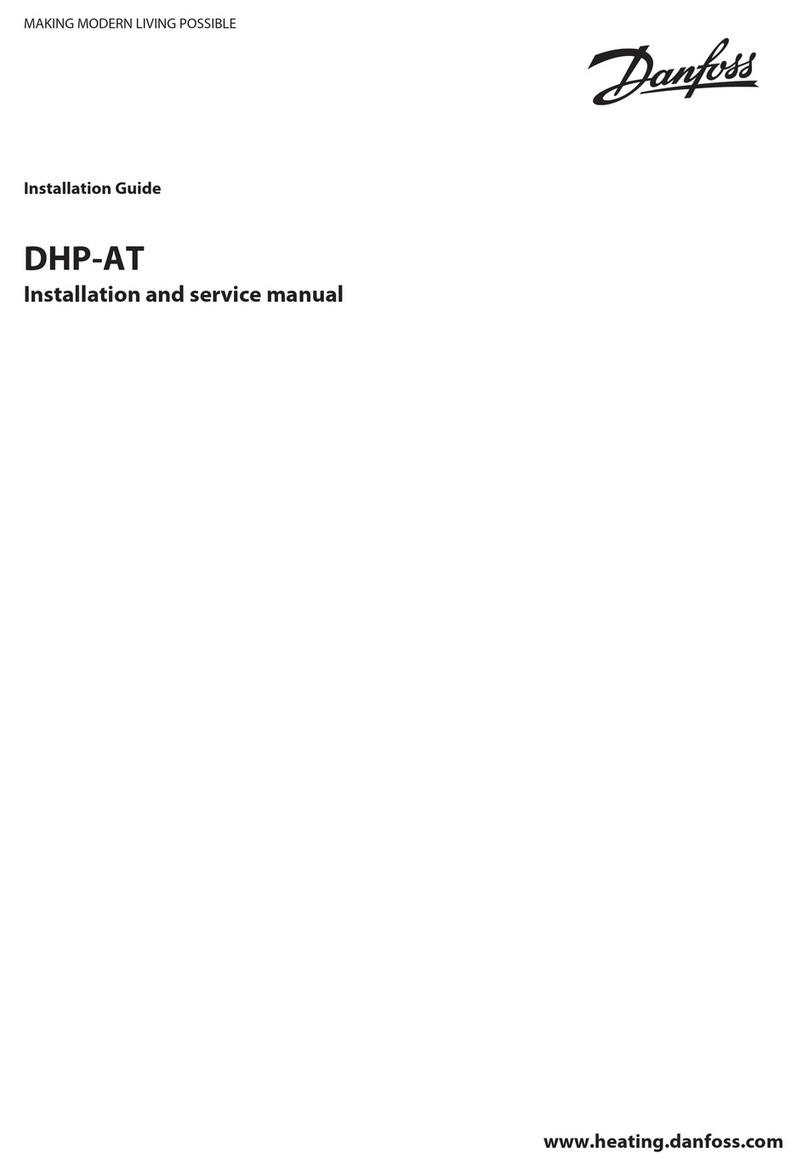
Danfoss
Danfoss DHP-AT installation guide
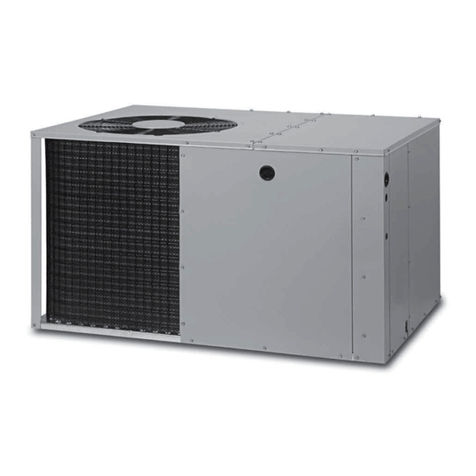
Nortek
Nortek PPH3RF Series installation instructions

Daikin
Daikin Altherma EHYKOMB33AA Installation and operation manual
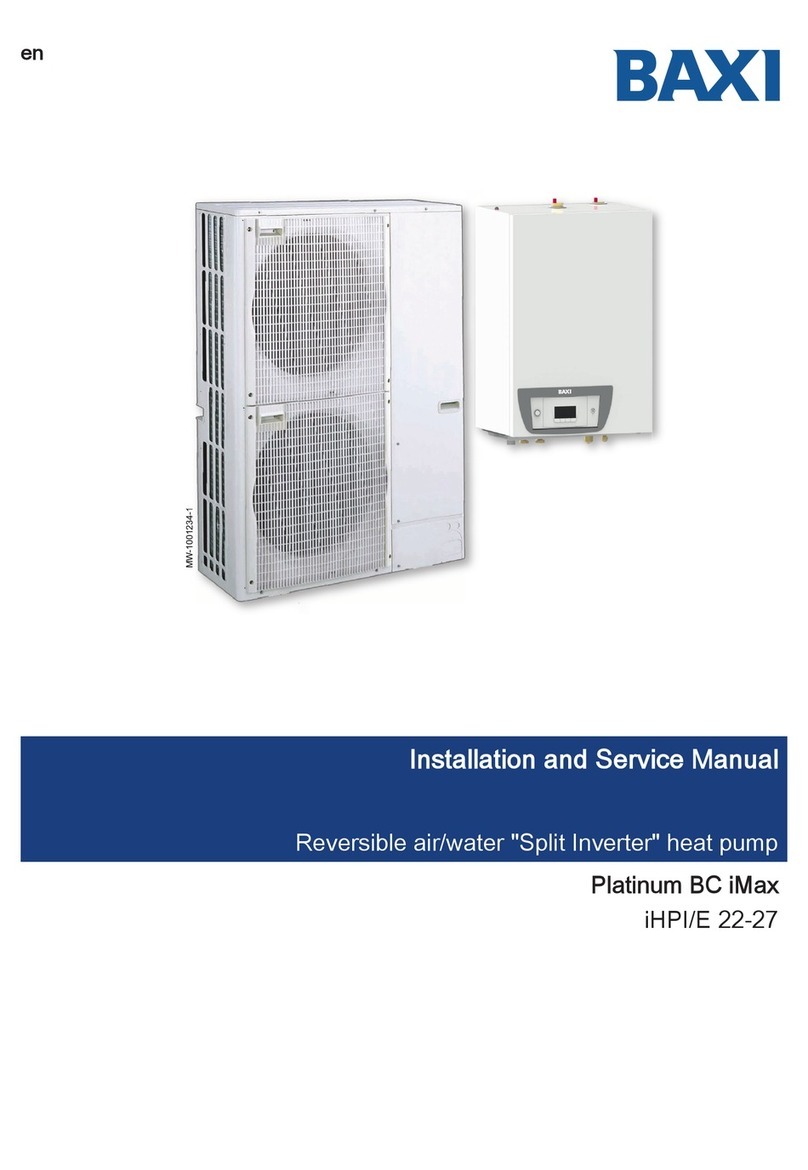
Baxi
Baxi AWHP 22 TR-2 Installation and service manual

Goodman
Goodman GSC140481A Technical information manual
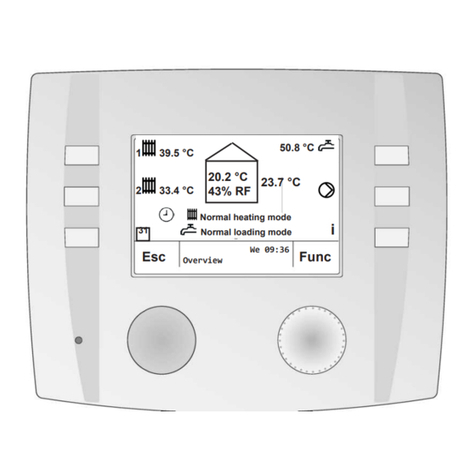
Hautec
Hautec HFB 6101 operating manual
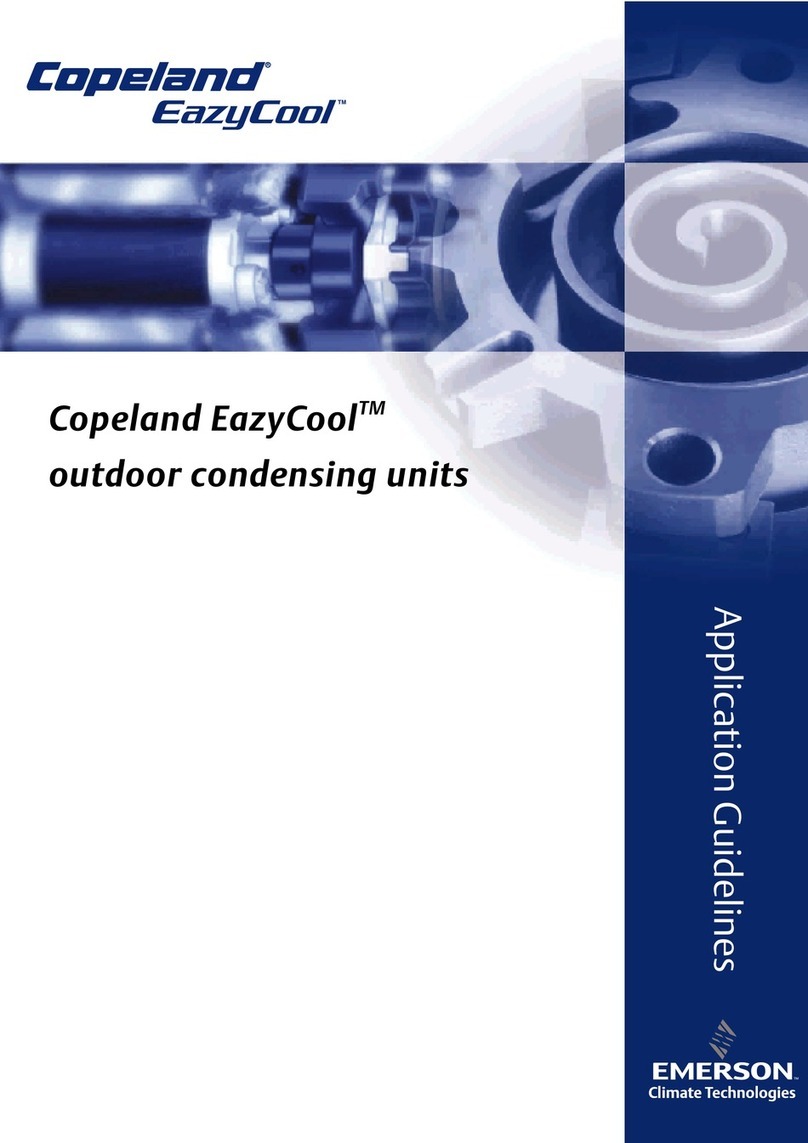
Emerson
Emerson Copeland EazyCool OM-15-PFJ Application guidelines
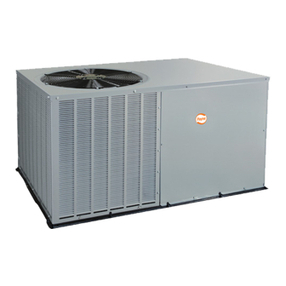
Payne
Payne PH3Z owner's guide
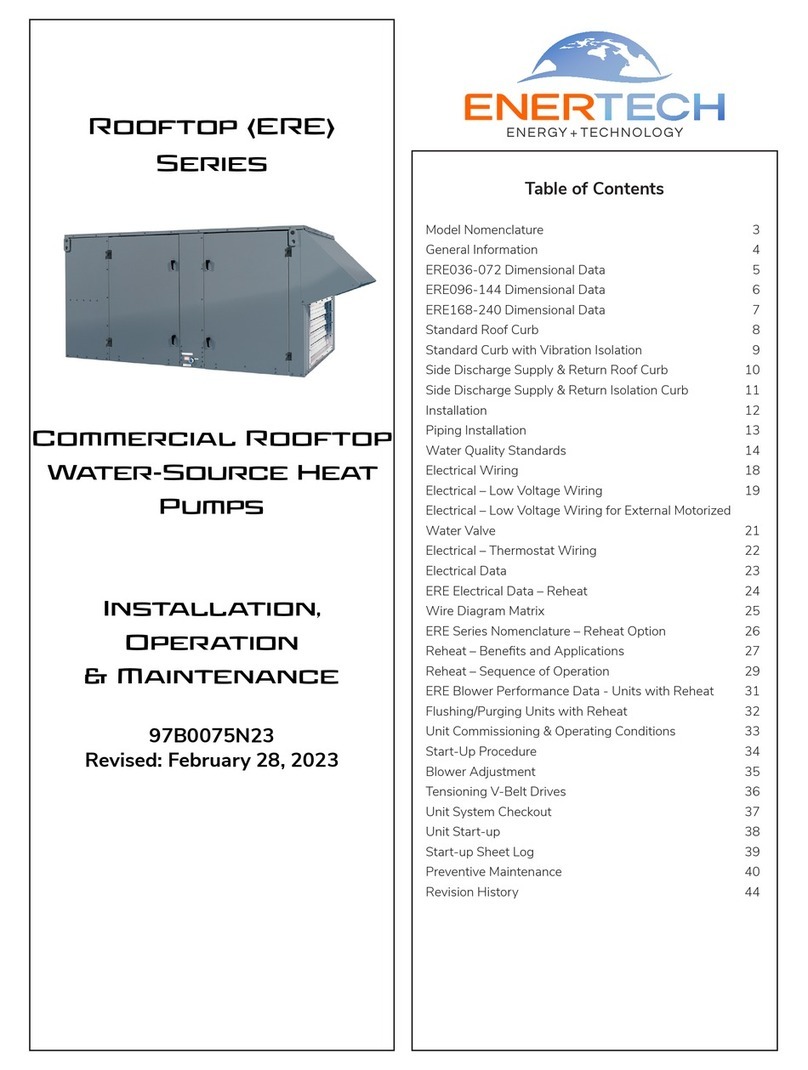
Enertech
Enertech ERE Series Installation operation & maintenance
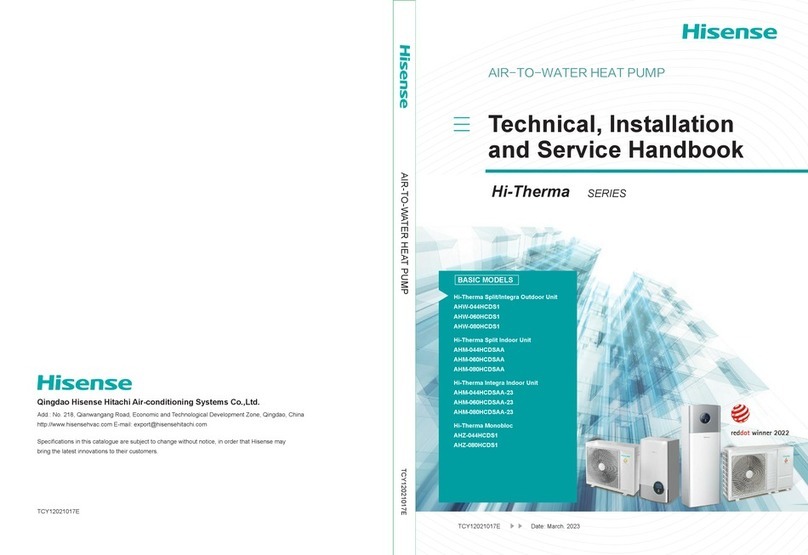
Hisense
Hisense Hi-Therma Series Service handbook
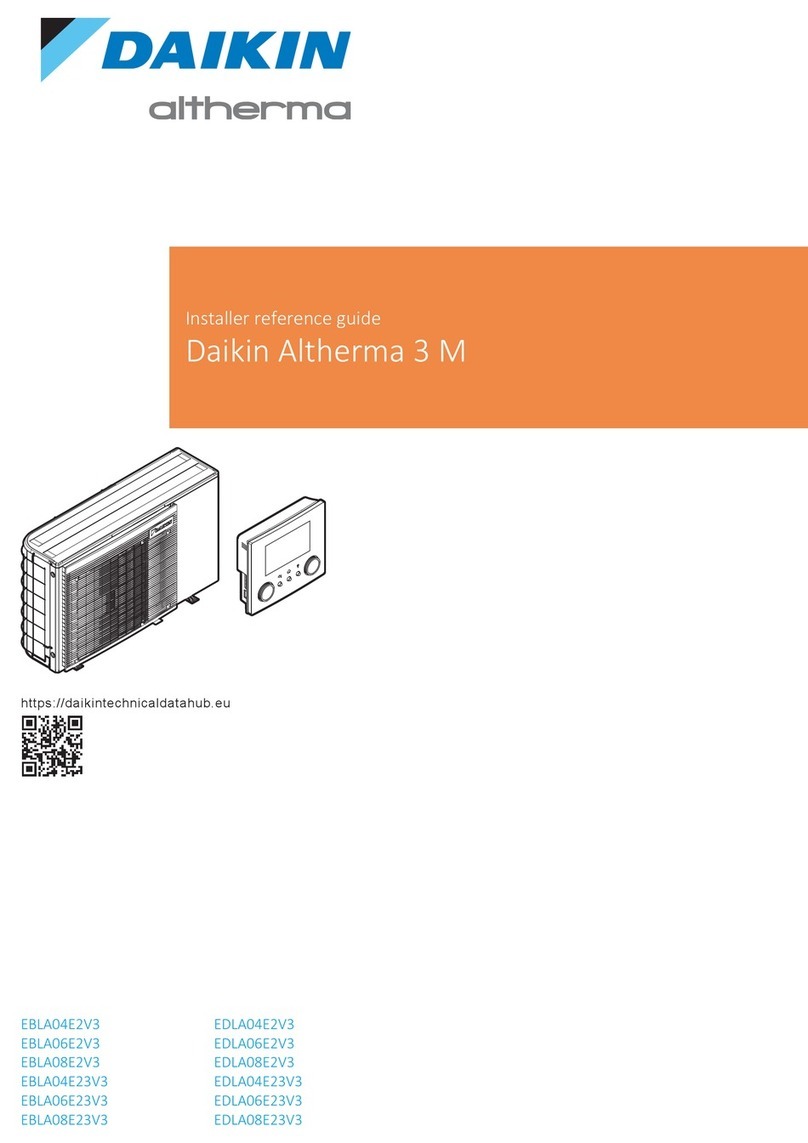
Daikin
Daikin EBLA04E2V3 Installer's reference guide
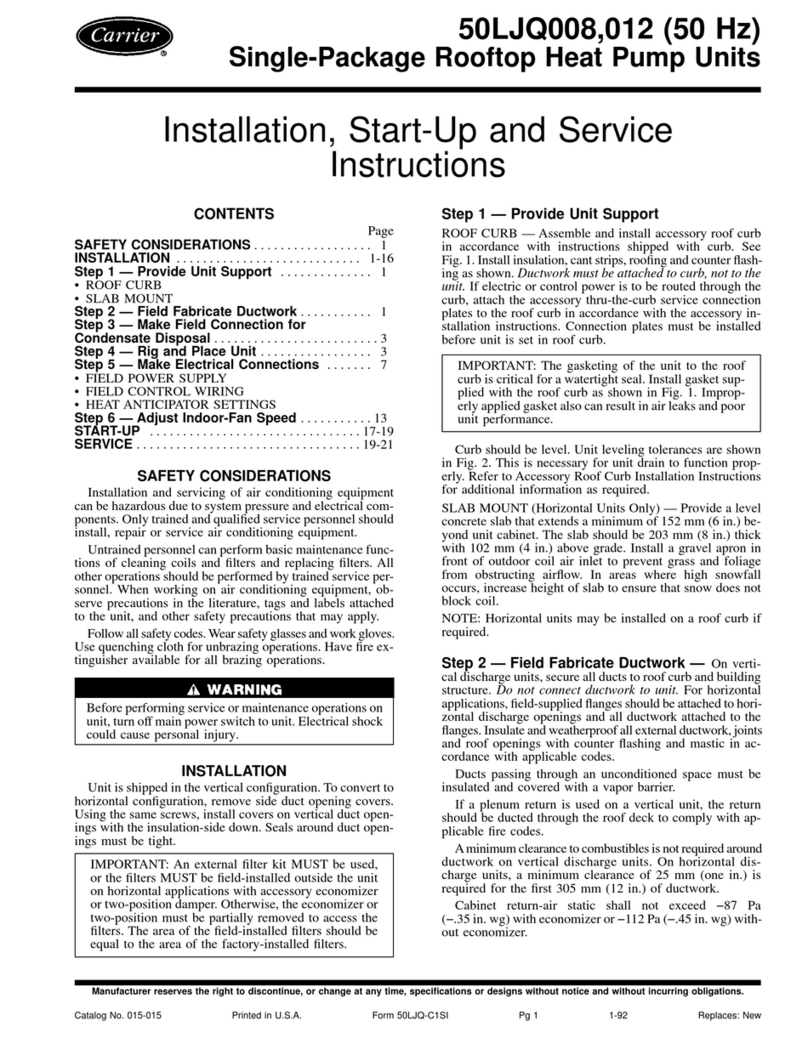
Carrier
Carrier Performance 12 Installation and service instructions
